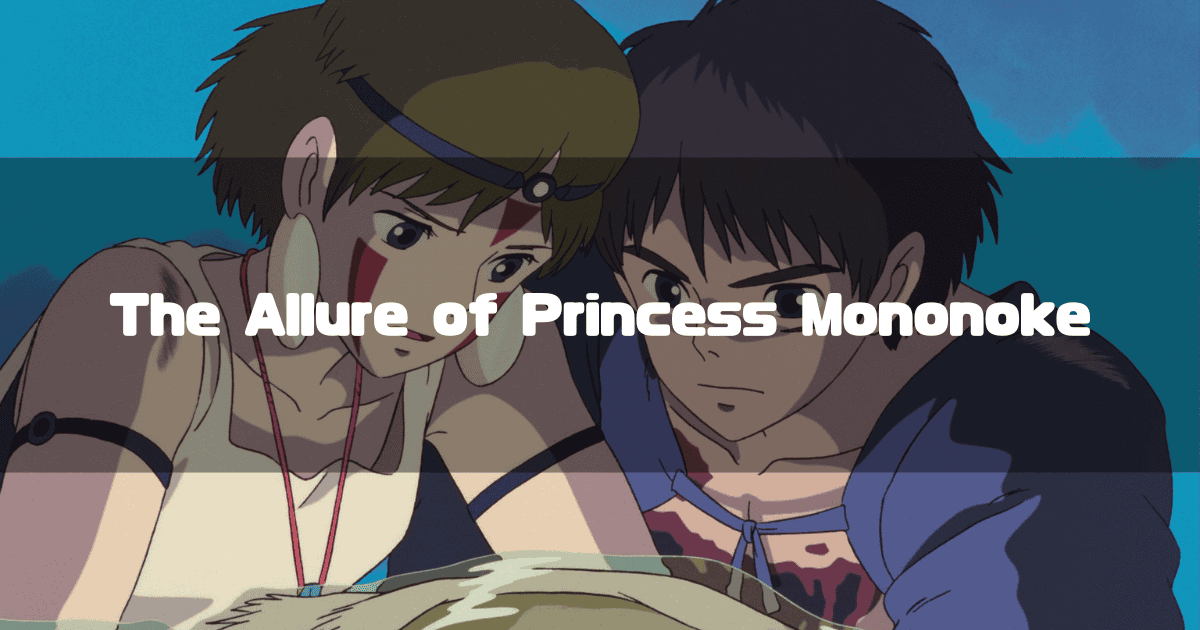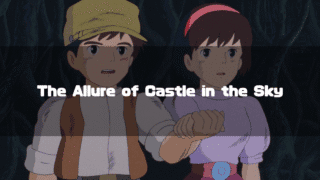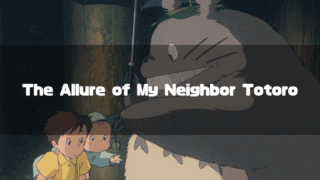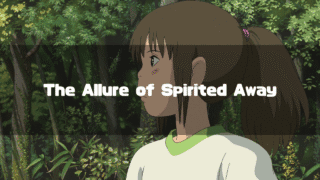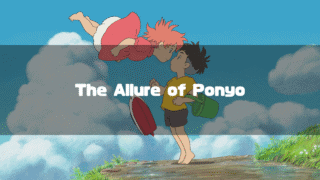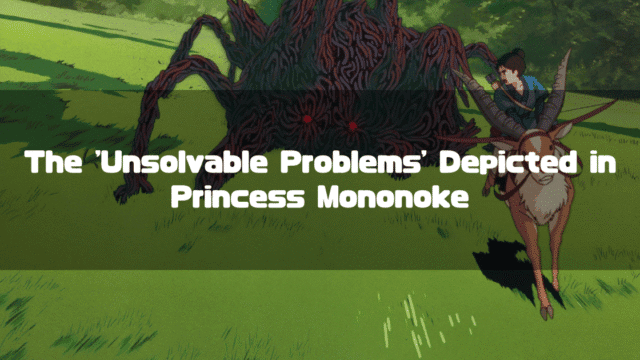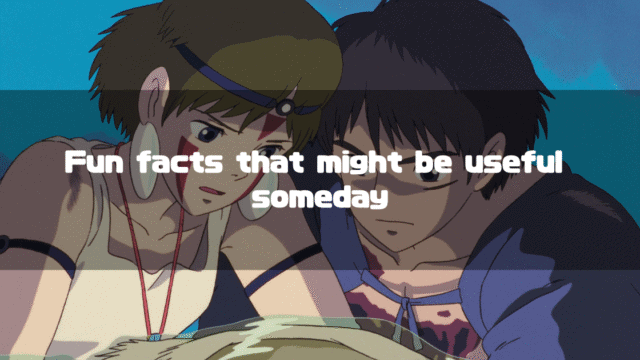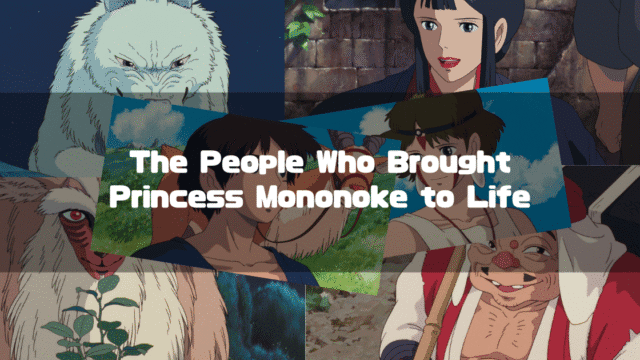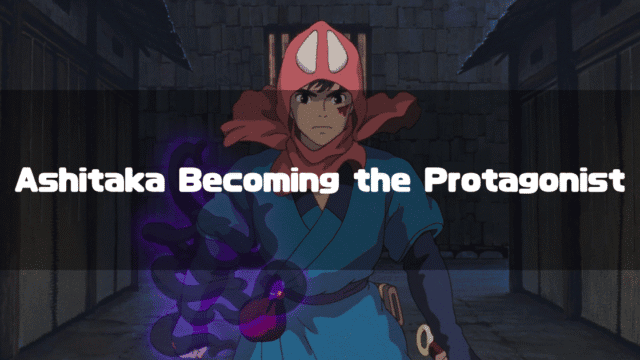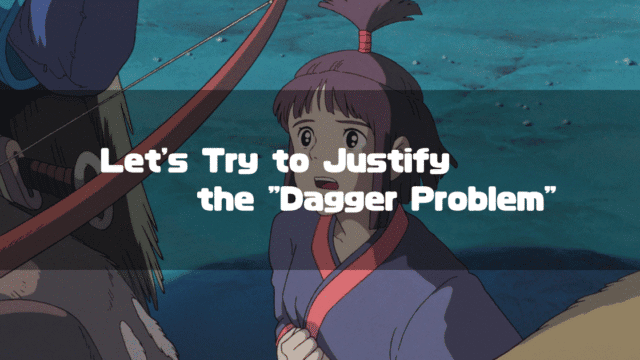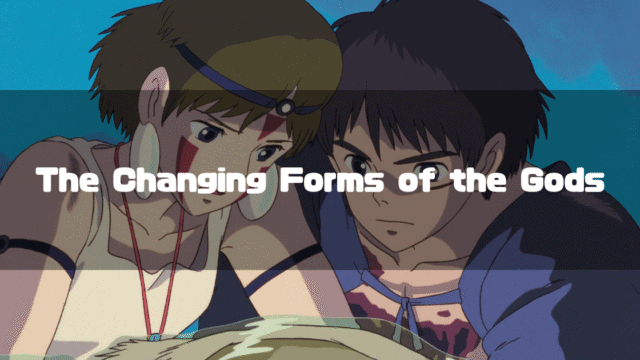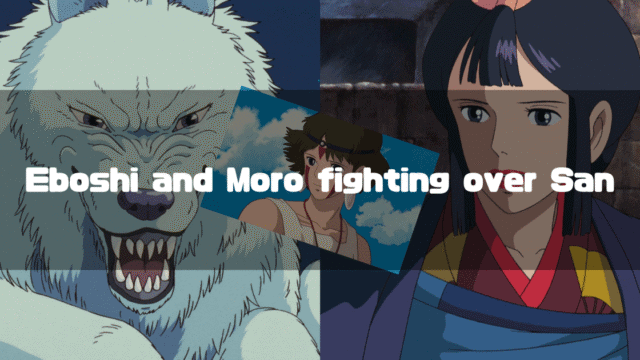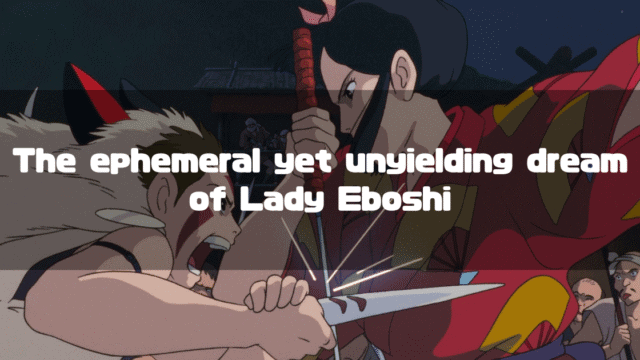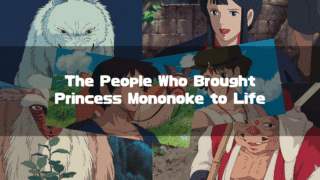Princess Mononoke(Studio Ghibli Official) is a feature-length animated film directed by Hayao Miyazaki, released on July 12, 1997. It was the first Studio Ghibli and Miyazaki film to exceed 10 billion yen at the box office, ultimately reaching 19.3 billion yen (20.1 billion yen including re-screenings during the COVID-19 pandemic).
While its box office performance was outstanding, a key characteristic of the film is that “it’s certainly interesting, but it’s hard to explain exactly what makes it so.” I myself was an elementary school student when I first saw Princess Mononoke, and I remember leaving the theater with questions about what I had just seen and how to interpret the ending.
This time, I’d like to summarize the plot and highlights of Princess Mononoke. By the way, when I say summary, I mean I’m going to spoil everything, so if you don’t like spoilers, please read up to a certain point and then watch the movie.
*This article is an English translation of the original Japanese article, 「もののけ姫」のネタバレあらすじと考察ポイント-人物相関図付きでラストまで解説-.
Let an AI walk you through the highlights of this post in a simple, conversational style.
- Detailed Synopsis
A brief summary of the film would be: “Cursed by The Deamon, the young man Ashitaka confronts the conflict between nature and humans on his journey, where he meets Princess Mononoke, San. After a great battle, he chooses a path of coexistence and resolves to live in a new land.” We will provide a more detailed synopsis, a character map and an explanation of the story. - Various Points for Discussion
We will explain various points for discussion such as Kaya’s Dagger, The Meaning of Deicide, The Pitch-Black End Credits, Lady Eboshi’s Ambition, The Protagonist Problem, What is The Deamon?, ‘Princess Mononoke’ as Hayao Miyazaki’s ‘Godzilla’, The Meaning of ‘He can’t die. He is life itself.’, and San’s Thick Arms, and introduce more detailed articles (within this blog).
Princess Mononoke (1997) Synopsis (Spoilers Ahead)

Quick Summary
A brief summary of the key points of Princess Mononoke would be as follows:
-
Ashitaka’s Curse and Departure
Ashitaka is cursed by The Deamon that attacked his village, and he sets out on a journey to find a cure. -
The Ironworks Village, Irontown
Guided by a man named Jiko, Ashitaka reaches the “Forest of the forest spirit” and finds refuge in Irontown, a settlement engaged in iron production. -
The Wrath of the Forest Gods
The gods living in the forest show intense anger and grief over human development. -
Princess Mononoke, San
San, a girl raised by the wolf god Moro, stands as Princess Mononoke in opposition to humans. -
Ashitaka and San’s Encounter
Caught between the two opposing sides, Ashitaka meets Princess Mononoke, San, and they come to understand each other’s suffering and desires. -
Lady Eboshi’s Moves
Lady Eboshi, the leader of Irontown, makes a secret pact with the Emperor to secure the stability of her town and aims to take the head of “the forest spirit.” -
Clash Between Humans and Nature
To protect the forest spirit, Okkoto (a boar god) and his clan come from the west (Kyushu) to the Forest of the forest spirit and engage in a decisive battle with the humans. -
Ashitaka’s Agony in Maintaining Neutrality
While understanding the positions and pain of both sides, Ashitaka seeks the possibility of harmony and reconciliation. -
The Cost of Battle and the Sorrow of Nature
In the end, the forest suffers a devastating blow, and the forest spirit disappears. -
Hope for Coexistence and a Choice for the Future
After the battle, Ashitaka decides to live in Irontown, and San decides to live in the forest, both choosing to live on in a new era.
Character Map
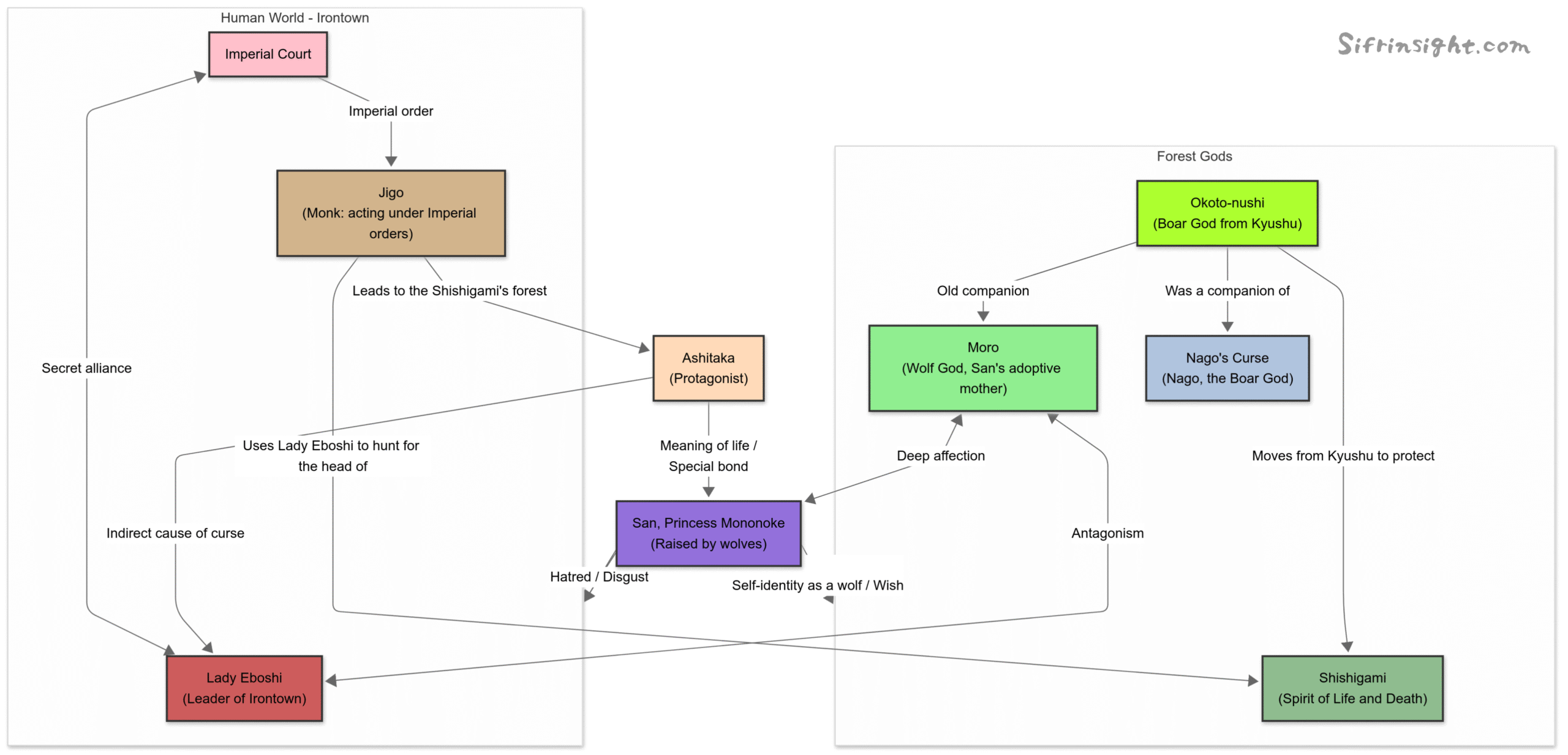
Explanation of the Story
Looking at the title Princess Mononoke, it might seem that the protagonist of the film is San, the Princess Mononoke. However, considering the narrative, it is more appropriate to see Ashitaka as the protagonist.
And when Ashitaka is seen as the protagonist, a key keyword becomes “absurdity.”
Ashitaka is the future leader of his village and a hero who saved his community from The Deamon, yet he ends up being exiled from his home. There’s no point in seeking a reason for “The Deamon’s attack” or “being cursed”; it’s merely something that “happened against his will.” But the one who bore the brunt of it all was Ashitaka alone.
The Deamon in Princess Mononoke symbolizes this kind of “unavoidable absurdity.”
When we think of “unavoidable absurdity” that we experience, natural disasters like earthquakes and typhoons come to mind. I believe Godzilla has been a symbol of such things.
Godzilla appears for some reason, destroys the world, and leaves before we know it. In the midst of it, most people can only endure and wait for it to go away.
In that it depicts this “unavoidable absurdity” and a “malevolent something” as its symbol, perhaps Princess Mononoke can be seen as “Miyazaki’s version of Godzilla.”
How one interprets the end of the story is up to each individual, but considering that he overcame an absurd situation and was able to discover a new land called “Irontown,” I personally believe that Ashitaka’s story had a happy ending.
From here, let’s take a more detailed look at the synopsis of Princess Mononoke.
Ashitaka’s Exile and Journey to the West
The era is the Muromachi period. People who were buried in the darkness of history still lived in hiding in the region now called Tohoku. The people who once lived there were called the Emishi. The protagonist, Prince Ashitaka, is a descendant of these Emishi.
Ashitaka was a young man destined to become the leader of his village. On that day, Ashitaka was living his usual life. But a dreadful presence, a The Deamon, was creeping closer.
And that threat suddenly attacks Ashitaka’s village. Ashitaka tries to subdue The Deamon, but it does not stop. If this continues, it will hit Ashitaka’s village directly.
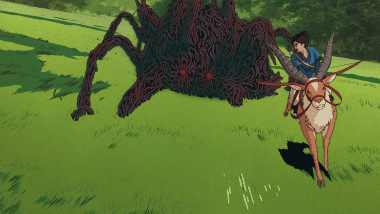
Knowing it is a sin he must not commit, Ashitaka draws his bow on The Deamon to protect his village. The first shot makes The Deamon flinch, but its curse strikes Ashitaka’s right arm. Still, Ashitaka fires another arrow to stop The Deamon.

The Deamon was vanquished by Ashitaka’s two arrows, but the curse of The Deamon was engraved on his right arm.
Although he saved the village at the cost of his own life, Ashitaka is exiled from the village because of the curse he received. It is a harsh decision, but Ashitaka accepts it. Ashitaka cuts his hair and bids a final farewell to his homeland.

The people of the village, having lost their next leader, send Ashitaka off with tears. The cursed Ashitaka was fated to leave the village alone, but Kaya, who was Ashitaka’s fiancée, tries to see him off. She entrusts a small dagger to Ashitaka as a part of herself.

To Kaya’s words, “I will always think of you,” Ashitaka replies with a beautiful smile, “I will think of Kaya too.” A smile for Kaya was all Ashitaka could leave behind.
After leaving his homeland, Ashitaka, along with his companion, the red elk Yakul, continued on a long, aimless journey. After some time, Ashitaka arrives at a certain village. He tries to get rice, offering a large grain of gold dust as payment, but the shop insists on being paid in cash (zeni). In this slightly difficult situation, a suspicious-looking man intervenes.

The man tells them that what Ashitaka offered was a large grain of gold dust and was very valuable, thus settling the situation. Ashitaka didn’t know why he did that, but the two shared a dinner made with Ashitaka’s rice.
Ashitaka asked the man about the iron bullet found inside The Deamon. The man didn’t seem to know about the bullet, but he told him about a place called the “Forest of the forest spirit” deep in the mountains further west from here. The creatures living in that forest, which keeps people away, have their ancient, giant forms, and he might find something out if he goes there. It was a glimmer of hope that Ashitaka, who had been on an aimless journey, had finally found.
On his way to the Forest of the forest spirit, he notices people being swept away in a river. They are also deeply wounded, and Ashitaka decides to treat them. At that moment, a giant mountain wolf appears on the opposite bank. That wolf also seems to be injured, but beside it is a human figure treating its wounds.

Thinking that the wolf is a resident of the Forest of the forest spirit, Ashitaka asks them about it from the opposite bank, but is dismissed with a “Go away!” Just then, he hears the cry of a man with relatively minor injuries. There was a forest spirit, a Kodama.

The man was frightened by its appearance, but Ashitaka said that its presence was proof that the forest was rich, and decided to follow the Kodama’s guidance. The Kodama led them deeper and deeper into the forest as if to mislead them. Ashitaka, believing in the Kodama, pushed forward and reached a silent swamp. As Ashitaka tried to get some water there, he saw a special presence beyond his line of sight.

The next moment, Ashitaka’s cursed right arm throbs violently. The throbbing in Ashitaka’s right arm subsided when the strange being disappeared, but is there some connection between that being and the curse Ashitaka received?
Irontown, Lady Eboshi, and the Princess Mononoke
After this mysterious experience, Ashitaka hurries on, concerned for the wounded men. After walking for a while, they reach the men’s base, “Irontown.” It was a settlement engaged in tatara iron smelting, ruled by women led by Lady Eboshi. The people of Irontown warmly welcomed Ashitaka for bringing back their comrades.

There, Ashitaka learns of Lady Eboshi’s heroic tale. Tatara iron smelting consumes a large amount of wood, and the rich forest was a treasure trove for the tatara people. However, the forest around Irontown was protected by large boars, and people could not touch it. It was then that Lady Eboshi appeared. Using firearms (ishibiya) brought from the mainland, Lady Eboshi drove away the lions of the mountain and built Irontown, the base for iron smelting. The boar, the master of the forest, was seriously injured by the ishibiya fired by Lady Eboshi and fled to the east.
Ashitaka finally learns that the great boar that attacked his homeland and left a curse on his right arm was a being that had been driven out of the forest by Lady Eboshi.
Ashitaka confronts Lady Eboshi with this fact. But when Eboshi asks, “And what do you want to do about it?” all Ashitaka could say was, “To see with eyes unclouded.” Ashitaka himself did not yet know what he wanted to do, or what he should do.
Eboshi, taking a liking to the naive yet refreshing Ashitaka, takes him to a secret garden. In that main house, there were people suffering from illness, yet diligently developing ishibiya. The people suffering from the disease that rotted their bodies were still living with all their might. And above all, they trusted and respected Eboshi. Ashitaka, who had cursed his own fate, must have been keenly aware of his own immaturity in the face of their desperate struggle to live. He had learned the vastness of this world.
That night, an incident occurs at Irontown. The mountain wolves Ashitaka met by the river attack Irontown. Along with the wolves, there was also a human figure. She seems to be called Princess Mononoke.

The murderous intent of Princess Mononoke attacking Irontown was serious. Princess Mononoke immediately reaches Lady Eboshi and tries to kill her. Ashitaka tries to stop the fight to the death between Princess Mononoke and Eboshi. Ashitaka’s right arm had become more malevolent than ever before.

Ashitaka uses the power of the curse on his right arm to knock out both Lady Eboshi and Princess Mononoke at the same time, resolving the situation. However, Ashitaka, who had also protected Princess Mononoke, no longer has a place in Irontown. Ashitaka leaves Irontown with Princess Mononoke and the mountain wolves. Ashitaka collapses from a serious wound he received while resolving the situation at Irontown. Princess Mononoke is perplexed by this. Should she kill him because he is human, or should she save him? At the moment Princess Mononoke is perplexed, Ashitaka tells her, “Live. You are beautiful.”
Perplexed by these words, Princess Mononoke decides to leave Ashitaka’s fate to the judgment of the forest spirit. Princess Mononoke lays Ashitaka down in the swamp where the forest spirit appears and leaves the place.
After a while, the forest, which had been wrapped in silence, suddenly becomes noisy. The forest spirits, the Kodama, are looking at a giant, Night-Walker. Its figure was like the darkness of the night itself.

The giant Night-Walker approaches the swamp where Ashitaka is sleeping, changes its form, and becomes a mysterious deer-like figure. It was the forest god, the forest spirit.

The forest spirit approaches Ashitaka and heals his wounds with its supernatural power.
When he wakes up, Ashitaka notices that his wounds are healed. However, the curse on his right arm has spread further and has not healed. Ashitaka, who had placed a glimmer of hope in the existence of the forest spirit, had no choice but to accept his fate of living while waiting for the day he would be consumed by the curse.
Just then, a mountain wolf and a giant boar appear. For the final battle against the humans who are invading the forest, the boars have crossed the sea from Kyushu, relying on the forest spirit. The boars are outraged that there are humans in the Forest of the forest spirit and that the forest spirit saved a human. Only the clan elder, Okkoto, calmly observes the situation, but leaves with the words that he must kill him the next time they meet.
Ashitaka, whose body is not yet free, moves to the home of Princess Mononoke.
Deicide and Ashitaka’s New Land
After being bedridden for many days, Ashitaka wakes up one night and talks with the wolf Moro.

According to Moro, San (Princess Mononoke) was a child abandoned by humans out of self-preservation. Moro, who raised San as her own daughter, was worried about her future. Ashitaka insists that there is a way for them to live together, but Moro dismisses him. To Moro, who has lived a long time, Ashitaka was still immature. Nevertheless, she also held a slight hope for Ashitaka.

When he wakes up the next morning, San and Moro are already gone. Ashitaka entrusts the dagger he received from Kaya to the one remaining wolf and asks it to deliver it to San. Entrusting San’s safety to the dagger that had saved his life, Ashitaka heads for Irontown.
When Ashitaka returns, Irontown is in the middle of a battle with local samurai. They were somehow holding on thanks to the strong fortress and the attack of the ishibiya, but the limit of their defense was near. And above all, neither Eboshi nor the men who should have been a fighting force were there.
Ashitaka, who was told that Lady Eboshi and the men had gone to “hunt the forest spirit,” runs to the mountain to inform Eboshi of the predicament of Irontown. The ishibiya corps that Eboshi had brought with her were a force given to her for the “forest spirit hunt.” Eboshi had gone to fulfill her original promise in order to realize her own ambition.
On his way to find Eboshi, Ashitaka sees a large number of dead boars. The forces sent by the Emperor, including Jiko, had made the boars prey to bombs. In this hellish scene, he finds the men of Irontown and tells them about Irontown, but Eboshi had already gone ahead.
With the help of a mountain wolf buried among the dead boars, Ashitaka somehow reaches Eboshi. He tells Eboshi about the predicament of Irontown, but Eboshi’s reaction is unexpected. She says that she has given weapons to the women in case Irontown is attacked, and that she has no intention of returning.
Sensing Eboshi’s intense obsession with the “forest spirit hunt,” Ashitaka gives up on stopping her and hurries to San, who must have gone to the forest spirit.
When he reaches the swamp of the forest spirit, he finds the wounded and fallen Moro, but San is nowhere to be seen. Then, Okkoto, who was wounded in battle and has become The Deamon, appears. San had been swallowed by Okkoto, who had turned into The Deamon.

Ashitaka desperately tries to save San, but is thrown off by Okkoto, who has turned into The Deamon. Seeing Ashitaka’s struggle, Moro musters her last strength, which she had been saving to kill Eboshi, and rescues San.
The forest spirit appears in the tumultuous swamp. A shot from Lady Eboshi’s ishibiya hits the forest spirit directly, but the forest spirit walks on as if nothing had happened and heads for Okkoto. As if nothing had happened, the forest spirit solemnly absorbs Okkoto’s life.

In a situation where all sorts of motives were swirling, only the forest spirit was transcendent. The forest spirit looks up at the night sky and begins to transform into the giant Night-Walker.

Eboshi did not miss that moment. Ashitaka tried to stop her, but Eboshi fired a decisive shot at the forest spirit. Jiko and his men capture the head of the forest spirit, which was blown off by the shot, and flee the scene. Their goal was to deliver the head of the forest spirit, which was said to grant immortality, to the Emperor.
Having lost its head, the forest spirit goes on a rampage, absorbing all life as it chases after its own head.

Ashitaka, along with San, pursues Jiko to retrieve the head of the forest spirit. He wanted to at least settle what humans had done with human hands.

Jiko desperately flees from the rampaging forest spirit, but the threat was right behind him. In the end, Jiko, unable to escape, hands over the head of the forest spirit to Ashitaka and San, entrusting their fate to them. Ashitaka and San hold up the head of the forest spirit together and return it to the forest spirit.
The forest spirit, having regained its power as Night-Walker, is exposed to the morning sun that dispels the darkness of the night. Even Night-Walker, a being beyond human comprehension, is exposed to the sunlight and lays its giant body down.
The forest, whose life was absorbed by the rampaging forest spirit, is slightly regenerated by the power of the fallen forest spirit. Not only that, but the illness of the people in Eboshi’s secret garden was also healed.
Facing the forest that has lost its forest spirit, San is filled with a sense of impatience. Still, Ashitaka tells her, “The forest spirit is not dead. It is life itself.” It is unknown whether the forest has lost its forest spirit. Regardless of that, Ashitaka, San, Eboshi, and the people of Irontown must live on in this world of extreme confusion.
San says, “I like Ashitaka, but I can’t forgive humans,” and chooses the path back to the mountain. Ashitaka tells San, “I’ll come to see you on Yakul.” It was Ashitaka’s declaration to live as a member of Irontown, and also an expression of his resolve to take on the role of maintaining the balance between the forest and Irontown.

The new land that Ashitaka had finally found was beginning to rebuild under the wounded Eboshi.

The fate that Irontown faces may be harsh. Nevertheless, the people living in Irontown will fight with all their might to live. Ashitaka will also fight with them. We can only hope that their days will be filled with much happiness.
The above is my personal summary of Princess Mononoke. In summarizing, I valued “Ashitaka’s perspective,” so the content is quite abbreviated, but I think it gives an idea of the flow of the story of Princess Mononoke.
Next, let’s look at the points for Analysis in Princess Mononoke.
Princess Mononoke (1997) Points for Analysis

Kaya’s Dagger
Anyone who has seen Princess Mononoke must have had something to say about the scene where Ashitaka gives the dagger he received from Kaya to San. Even as a child, I thought, “Ashitaka, why?!” but looking at it now, my impression is a little different.
To begin with, as a child, I couldn’t understand Ashitaka’s hardship of being exiled from his homeland at all. If we presuppose Ashitaka’s hardship, the meaning of his actions seems a little different. I have summarized this in the following article, so I hope you will compare it with your own opinion.
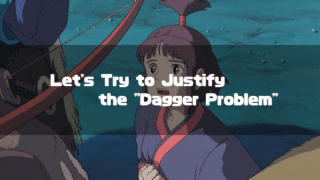
However, I think we should also value the feeling we first had of “Ashitaka, why?!”
The Meaning of Deicide
If you were to answer the question, “What was Princess Mononoke about?” one answer would be “a story of deicide.” This is certainly true, and at least the basic plot of the second half is “deicide.” However, the important thing is what it means for “humans to kill a god.” I have summarized my personal thoughts on this “deicide” in the following article.
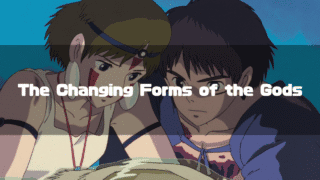
It’s a bit of a complicated issue, so opinions may be divided, but the important thing is to see opinions that are different from your own. What did you all think?
The Pitch-Black End Credits
The last thing to note when watching Princess Mononoke is the end credits. The end credits of Princess Mononoke show the staff roll on a pitch-black background. The theme song sung by Yoshikazu Mera is so beautiful and has such tremendous persuasive power that it’s perfectly fine for it to be pitch-black. However, this is extremely unusual for a Miyazaki film; it has never happened in his previous works. Why are the end credits of Princess Mononoke pitch-black? I have summarized the reasons in the following article.
However, even though I say I’ve summarized it, the writing is verbose, so the core may not be easily conveyed. Still, if you’re interested, I’d be grateful if you read even a single line.
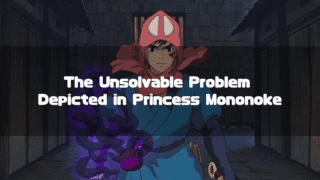
Well, the truth of the matter may be that there was no time to create a background for the end credits.
Lady Eboshi’s Ambition
The film Princess Mononoke is supported by many fascinating characters. However, for most of them, their backgrounds are not told. The most prominent example of this may be Lady Eboshi. While watching the film, we get a sense of Eboshi’s purpose, but it is not depicted in a way that is clearly understood.
Initially, Eboshi is depicted as a “good ruler.” We instantly fall in love with such an Eboshi, but many people must have felt a sense of unease in the scene where Eboshi, who went to “hunt the forest spirit,” did not return to save Irontown. I myself felt that way.
We could simply dismiss that scene as “Eboshi was actually a terrible person,” but it’s not interesting to end it there. Why didn’t Lady Eboshi return to Irontown at that time? It seems important to put the reason into your own words to enjoy Princess Mononoke. I have summarized that in the following article.
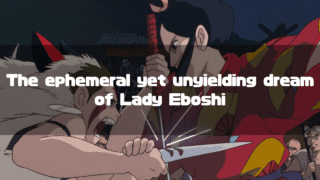
You may not notice it much even after reading the article above, but when I think of Eboshi’s dreams and despair, tears flow. Perhaps the true protagonist of Princess Mononoke was Lady Eboshi. Just a maybe, though.
The Princess Mononoke Protagonist Problem
Strangely enough, a problem with sufficient grounds for discussion is the question of who the protagonist of Princess Mononoke is.
It’s not a language class, so you can think of anyone as the protagonist, and it’s better to have originality by thinking of someone different from who most people think of as the protagonist, but I personally think it’s clearly Ashitaka. I have summarized that in the following article:
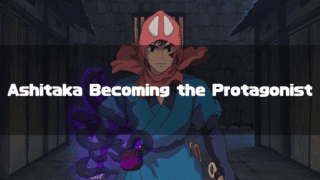
Who do you all think is the protagonist of Princess Mononoke?
What was The Deamon?
An existence that cannot be ignored when talking about Princess Mononoke is The Deamon.
If you were asked what kind of existence The Deamon was, you could say it was a “symbol of hatred.”
However, the important question is why such a “symbol of hatred” was necessary for the story of Princess Mononoke. I have summarized that in the following article:

Why do you all think The Deamon was necessary for the story of Princess Mononoke?
Princess Mononoke as Hayao Miyazaki’s Godzilla
At the end of Princess Mononoke, the scar symbolizing Ashitaka’s curse did not completely disappear and remained.
While it is natural to see this as a manifestation of the film’s theme of “unsolvable problems,” it can also be viewed as a “regrettable ending” where the curse was not fully lifted.
On the other hand, by tracing the similarities between Princess Mononoke and the original Godzilla, we can also read a positive message in the ending, celebrating that “Ashitaka survived, even though the scar remained.” I have summarized these points in the following article:
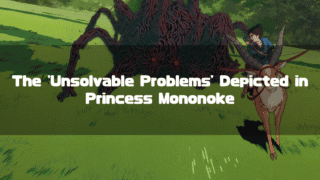
What do you think is the meaning of the scar that remained on Ashitaka’s arm at the end of the story?
The Meaning of the Words, “He can’t die. He is life itself.”
At the end of the story, as San grieves the loss of the Forest of the Shishigami, Ashitaka tells her, “He can’t die. He is life itself. He is both life and death.”
For a moment, you might think, “Huh? What does that mean?” but isn’t it a line you might let slide because it feels somewhat understandable?
Of course, it can be interpreted as words of compassion for San, who lost the Forest of the Shishigami. However, based on the fact that Director Miyazaki stated in an interview that “the Shishigami is a low-class god,” a slightly different interpretation is possible.
In short, it can be interpreted that “the Shishigami became a higher-class god by disappearing.” I explore this further in the following article:
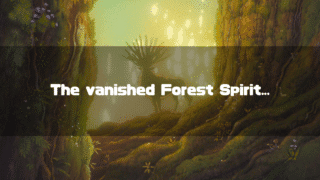
How do you interpret the meaning of that line?
Appendix: San’s Thick Arms
This isn’t exactly a “point for discussion,” but first, let’s look at the image below:

This is an image that Studio Ghibli officially released. The most noteworthy thing is the thickness of San’s arms.
Since San lives in the forest, she cannot live without appropriate arm strength, and her arm strength develops naturally.
The fact that they depict such details properly is what’s wonderful about Miyazaki’s works.
However, some people may want to complain about the “lack of armpit hair,” but it seems that had to be omitted due to a problem completely different from “reality.”
In other words, if they had drawn armpit hair in this scene, they would have had to draw armpit hair in all other scenes.
If that were the case, the animation effort would increase several times, dozens of times. They would not be able to release the film on the scheduled date.
Well, there may be other reasons besides that.
I wonder what the reality is.
Princess Mononoke (1997) Trivia & Fun Facts Collection
While creating articles for Princess Mononoke, I came across various materials. I’ve compiled some of the non-essential trivia and fun facts I learned into the following article:
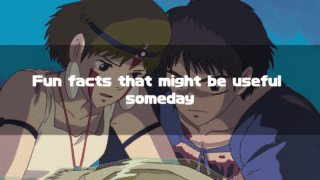
Perhaps you’ll find something you can share with someone tomorrow.
The images used in this article are from “Studio Ghibli Works Still Images“.
About the Author
Recent Posts
- 2025-10-21
Indiana Jones and the Dial of Destiny(2023): Full Synopsis & Analysis: Indy’s True Motive and the Enigma of Helena - 2025-10-15
Indiana Jones and the Dial of Destiny(2023):Historical Background-WWII, the Real Dr. Schmidt, the Siege of Syracuse, and the Antikythera Mechanism - 2025-10-08
Why Does Children Who Chase Lost Voices Feel So Ghibli-esque? [Makoto Shinkai’s “Tale of Farewell”] - 2025-10-07
5 Centimeters per Second: Characters, Voice Actors, Character Analysis and Character Map - 2025-10-06
5 Centimeters per Second: Full Synopsis, Analysis, Ending Explained & Character Map (Spoilers)

